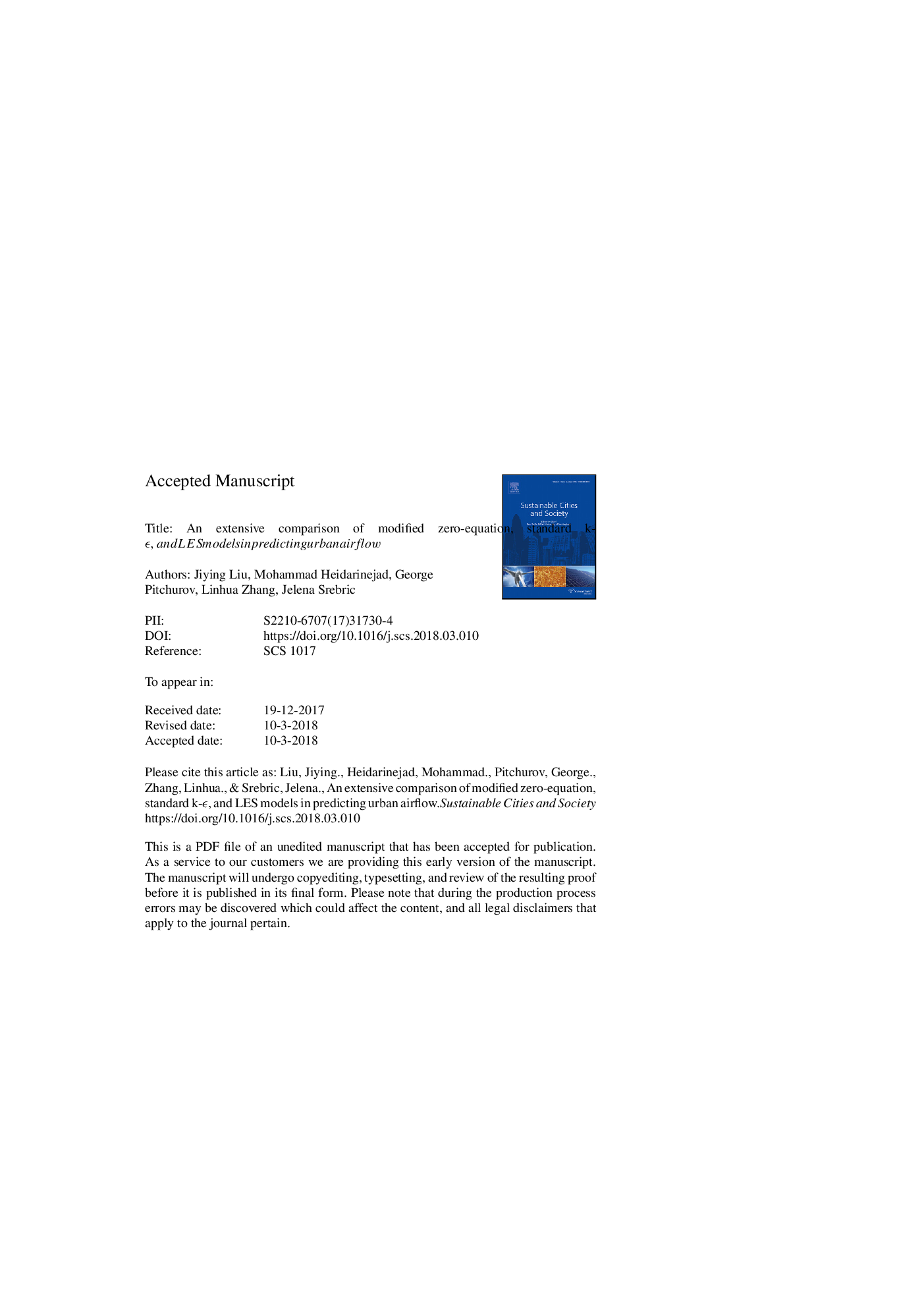| Article ID | Journal | Published Year | Pages | File Type |
|---|---|---|---|---|
| 6774918 | Sustainable Cities and Society | 2018 | 37 Pages |
Abstract
Accurate CFD simulations of urban airflow are of significant importance for a large variety of environmental studies and associated building energy consumption. As a relatively fast and reliable turbulence model compared to Standard k-ε turbulence model (SKE) and Large Eddy Simulation (LES), the improved Zero-equation (ZEQ) turbulence model has gained attention to simulate outdoor airflow and contaminant dispersion. This study evaluates the performance of four commonly used ZEQ turbulence models applied to flow around urban environments and analyze their sensitivity and uncertainty for different airflow configurations. These configurations entail airflow around (1) an isolated building, (2) regular blocks, and (3) building complexes. The results show that average computational time for these three turbulence modeling approaches (ZEQ: SKE: LES) scaled approximately to a 1:5:30 ratio, which demonstrated the computational competitiveness of ZEQ as a fast turbulence model for prediction of airflow in urban areas. The comparisons between simulation results and experimental data show that previously developed ZEQ models are slightly faster than the SKE turbulence model and have a slightly inferior performance compared to LES. In summary, the performance of the specified ZEQ turbulence model indicates that this turbulence model is a good fit for outdoor airflow studies.
Related Topics
Physical Sciences and Engineering
Energy
Renewable Energy, Sustainability and the Environment
Authors
Jiying Liu, Mohammad Heidarinejad, George Pitchurov, Linhua Zhang, Jelena Srebric,
